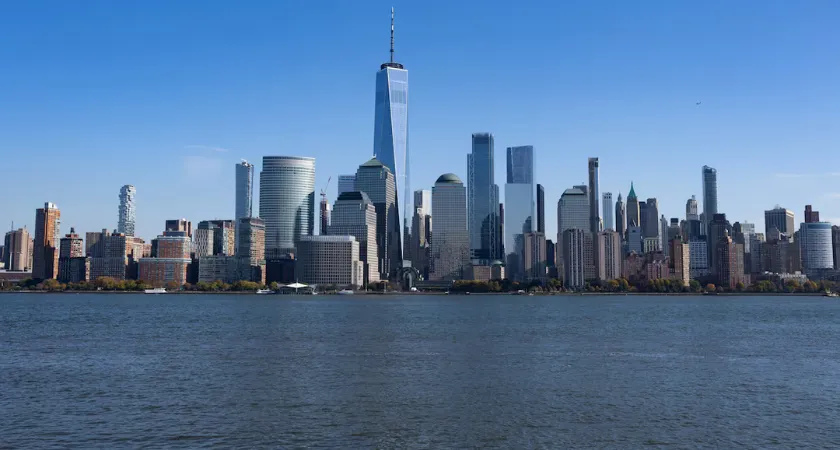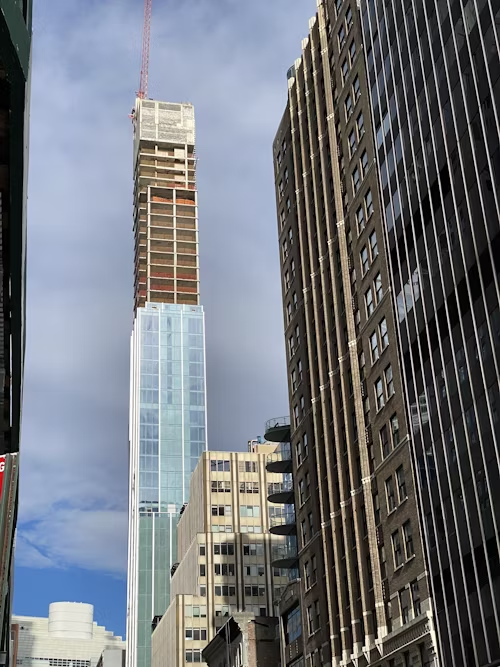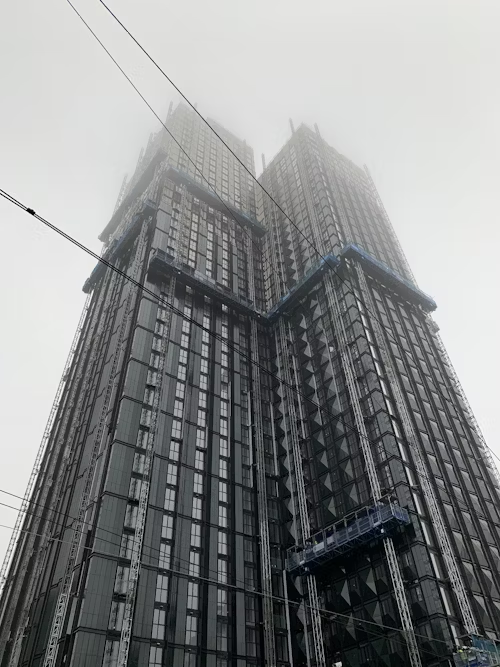
When Citicorp Center opened in 1977, it stood as the seventh-tallest skyscraper in the world and one of New York City’s most striking modernist designs. Perched above the ground on four massive stilts, the building appeared to float—an architectural choice made to preserve Saint Peter’s Lutheran Church, which sat on the corner of the site.

The building’s lead structural engineer, William LeMessurier, designed a system of giant V-shaped chevron braces and a massive tuned mass damper, a 400-ton block that countered wind sway, to ensure stability. The innovative design passed wind tunnel tests and was hailed as a triumph of engineering.
But just a year later, a hidden flaw emerged that could have turned the skyscraper into one of the deadliest engineering failures in history.
The issue first surfaced when Princeton engineering student Diane Hartley studied the building for her thesis. Her calculations suggested that the structure was dangerously vulnerable to diagonal winds—gusts hitting the tower at its corners rather than its sides. In those conditions, the chevron braces could buckle, and the entire tower could collapse.
Hartley brought her findings to LeMessurier’s firm, but was initially dismissed. Around the same time, another student, Lee DeCarolis, reportedly reached a similar conclusion and also contacted LeMessurier. Eventually, the warnings broke through.
LeMessurier began his own review and realized the nightmare scenario was real. Not only did diagonal winds pose a fatal risk, but construction crews had bolted the braces together rather than welding them, a cost-saving decision that further weakened the structure. The engineer concluded there was a “100% chance” the building would collapse before the end of the century if the flaw went uncorrected.

Faced with a potential disaster that could kill thousands and flatten Midtown Manhattan in a domino-like collapse, LeMessurier made a fateful decision: to quietly fix the building at night.
Secret crews worked through the dark hours, welding steel plates over the bolted joints to reinforce the braces. Meanwhile, the Red Cross was put on standby, evacuation plans were drafted for surrounding blocks, and private meteorologists were hired to monitor storms during hurricane season.
For nearly two months, workers labored in secrecy. The repairs were completed just in time, and a major public panic was avoided thanks in part to a newspaper strike that kept the story out of the press.
The truth about how close New York came to catastrophe did not surface until 1995, when The New Yorker published an exposé on the events. By then, the Citicorp Center—renamed Citigroup Center and later 601 Lexington Avenue—was a fixture of the city’s skyline.
Though remembered for the flaw, LeMessurier’s legacy became one of professional ethics. By admitting his mistake and risking his career to prevent disaster, he set an enduring example for future engineers. The case is now taught in engineering ethics courses worldwide.
The skyscraper remains a New York City landmark, standing not only as a marvel of design but also as a reminder of how a single engineering miscalculation—if left uncorrected—could have changed the city’s history forever.
Originally reported by Greg Heilman in EN. AS.